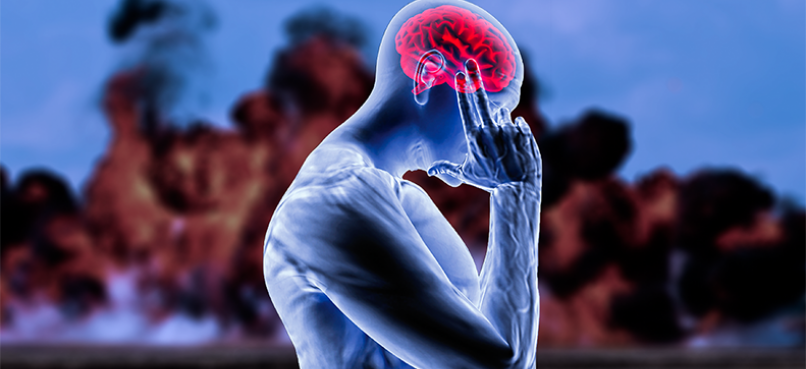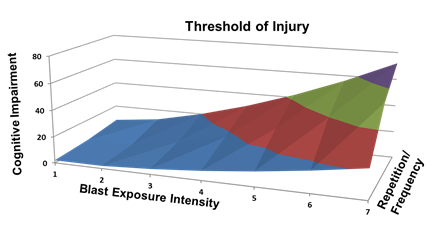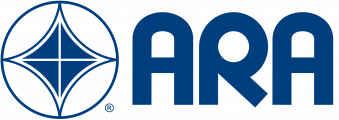BLAST Algorithm & Brain Gauge
Challenge
As many as 10% of warfighters have sustained clinically detectible traumatic brain injury. Most TBI cases are “mild” (mTBI) and symptoms are only detected if they are continuous. Most mTBI symptoms will improve with time, however, the underlying damage could persist. Since recovery time and relationship to severity are largely unknown, affected personnel are at risk of being exposed to a second event before the effects of the first (event) are recovered. A second exposure is likely to exacerbate the injury, and multiple exposures (even sub-threshold) could cause cumulative injury.
While injurious blast events cannot be prevented, repeated exposure can be. With no available data on the injury thresholds, the Pentagon established a mandatory 24-hour rest period after any presence within 50m of a blast event, regardless of the intensity or proximity. Unfortunately, these arbitrary guidelines compromise medical and operational fitness. In order to have clinical value and operational relevance, stand-down guidelines must be based on experimentally-derived correlations between the intensity of a blast event and the resulting neuropathology. Such guidelines can more accurately idenitfy at-risk personnel and “clear” others to maintain the fighting force.
Solution
ARA’s interdisciplinary team is modeling the complex relationship between the intensity of a blast event and the severity of the associated injury. This is being accomplished through integration of experimental data from animal studies with human exposure data from operational and training events. The contribution of frequency and repetition to cumulative injury will be determined from large animal studies, and the patterns will be modeled to human injury thresholds for single exposures. Once complete, the BLAST Algorithm will be used to determine which personnel have been exposed to an above-threshold blast event, and should therefore undergo brain health testing with a sensitive and accurate neuro-functional assessment tool. Those cleared for brain health can return to duty, while those with functional decrement should stand down until recovered.
In partnership with Cortical Metrics, LLC, ARA is also productizing Brain Gauge, a miniaturized and ruggedized neuro-functional assessment tool for far-forward detection of mild TBI. The two products create a technology suite that enables the prediction of at-risk personnel and the detection of those actually injured and in need of rest or further care.



